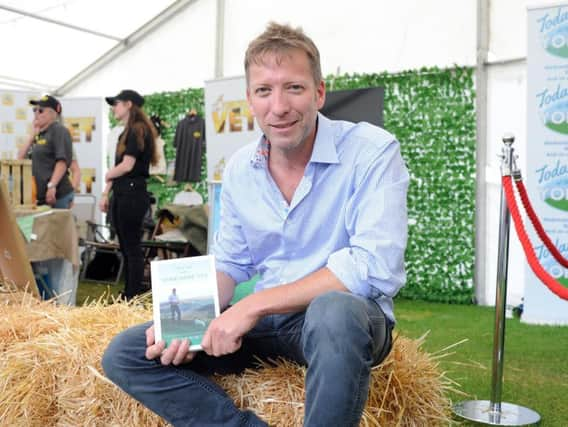Yorkshire Vet Julian Norton: How a sticky experience taught me to respect a dog's backside


There are a multitude of reasons why a vet needs to do this and the donning of a latex glove, followed by the liberal application of gloopy lubricant to the index finger is an act with which all veterinarians are well acquainted.
It is not a very nice thing for the dog, nor for the vet, but it is necessary to investigate and treat all sorts of problems – prostate disease, hernias, growths and masses and, of course, the dreaded anal glands.
Advertisement
Hide AdAdvertisement
Hide AdThese noxious structures are scent glands, which sit on either side of the anus, at approximately four o’clock and eight o’clock, if you imagine the anus as a clock face (don’t dwell on the image though).
These glands fill up with a horrible, smelly secretion, which usually empties when dogs pass faeces, to act as a method of marking territory. Since dog’s territory is usually marked nowadays by the garden fence or the perimeter of the park around which they are taken for their morning walk, the glands are largely redundant and a nuisance rather than of any benefit.
Sometimes they don’t empty properly and the result can be impaction of the anal glands, which sounds like a condition from pre-Herriot days. The finger is inserted to allow palpation of each gland. It is easy to tell if the gland is full – there is no need for complicated tests or MRI scans to diagnose the problem and, in any case, even before we insert the lubricated digit, the behaviour of the dog as described by its owner is usually enough to identify the problem.
Advertisement
Hide AdAdvertisement
Hide Ad“He’s been scooting along the round and going mad with his back end,” is a common description. “She can’t stop licking under her tail,” is another. Either way, it is easy to identify impacted glands and also easy to fix.
Squeezing the left gland and then the right and mopping up or catching all of the smelly contents in a wodge of cotton wool is one of the first things that vets learn to do and one of the first jobs that senior vets delegate to juniors and that junior vets delegate to students.
I can remember exactly my first encounter with the anal glands of a dog. I was an enthusiastic school boy, eager to become a vet one day. I would walk to the local vets in Castleford after school and spend a few hours watching, learning and helping out (to a small extent – there was not very much useful that a school child could do, but I tried to get as much practical experience as possible).
Advertisement
Hide AdAdvertisement
Hide AdThursday evenings were long but full of interest and excitement and I would always get home, well after eight, with aching feet from standing up, hungry for my tea and thirsty for more knowledge.
In the case of the anal gland encounter, I was just a bit too thirsty for knowledge as I leaned in, peering under the dog’s tail to get a better view. The vet, clearly without concern for the vet-to-be, gave not a hint of a warning as he squeezed the foul-smelling glands.
A fountain of stinking, fetid liquid paste splattered my face, into my mouth and all over my hair. I tried to maintain my composure in this most horrible of circumstances.
But it stood me in good stead for the future. I treat the anal area of dogs with a healthy respect and I ALWAYS warn students if their enthusiasm takes them just a bit too close!